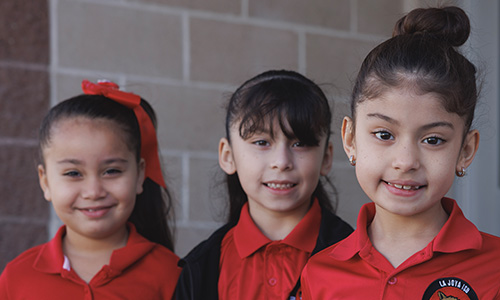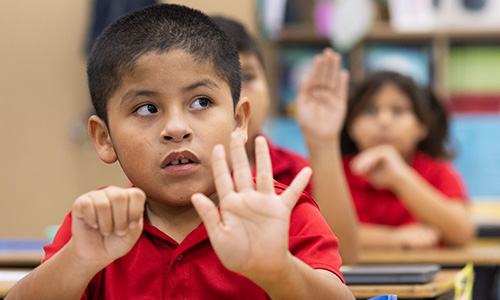
Have you ever had one of those experiences where you use a word and soon realize your listener had a completely different interpretation of it? One of the most memorable of those communication breaks happened to me when my wife and I were newly married. We talked about how our apartment needed cleaning, then set off to do exactly that. I went after the irritating clutter; she went for the dirt. To me, “clean” meant getting things in order. To her, it meant wiping down baseboards. I hadn’t even noticed the baseboards. Ever. And I certainly didn’t think her notion of “clean” was as pressing as mine. We thought we were talking about the same thing, but we each meant something quite different. It led to a playful routine where we would stop and play a quick round of “what I said vs. what you heard” when we had unexpected responses from each other during conversations.
Words are funny that way. We like to think that the other person is hearing certain words in the same way that we mean them. We want our meanings to be shared. Often, though, that is simply not the case. And while misunderstanding each other’s meaning of the word “clean” is innocuous, other occasions of mismatched meanings could be far more, well, meaningful.
Formative conversations can illuminate student understandings
In educational settings, formative conversations can serve to help teachers and students better understand each other, just as my wife and I have tried to do since that fateful cleaning day. Consider the mathematics classroom. There are all sorts of ways people might talk past each other. The word “fraction” is a great example. When I say that word, I have a certain meaning that is grounded in how I think about that term. My listeners, on the other hand, all bring their own ideas to it: I might be thinking about a fraction as a point on the number line. Someone else might be thinking about circular foods. Another might be thinking about part/whole relationships while yet another might completely shut down due to a history that lacks any healthy, meaningful ways to think about fractions. It might look like we are talking, but given our different meanings one might argue there is very little communication actually taking place.
“There are certain kinds of higher order thinking that only really express themselves when we talk to each other,” says former NWEA researcher Chase Nordengren while describing the strategy of using student discourse as formative assessment. It’s the ninth of ten transformative instructional strategies grounded in his research into what approaches work best in high-growth schools.
Chase is right on in the study’s accompanying white paper when he calls out that “getting students talking to one another is one of the most important things that can happen in any classroom.” The need to “facilitate meaningful mathematical discourse” is also strongly urged by the National Council of Teachers of Mathematics (NCTM). It’s one of the eight mathematics teaching practices listed in their Principles to Actions document. I often emphasize that meaningful mathematics discourse must focus on mathematical meanings. That is, to enable true communication, we must establish that we are meaning the same things. The trick, however, is to find ways to get such conversations going and to know what to listen for.
How to improve communication with formative conversations
In line with Chase’s take, my colleagues and I thought about the formative space as a valuable place to drive powerful conversations. After considerable effort, we ended up building a series of eBooks called Formative Conversation Starters that are available for free on the NWEA website. There, we provide what we call “Big Ideas to Nurture Standards Sense-Making,” or BINSS, as a high-level framework of things to listen for, along with clusters of questions that invite opportunities to uncover meanings.
For example, when it comes to fractions, we aimed to highlight the importance of thinking about fractions as a number on the number line: “Fractions: A fraction is a single number. It is a number just as 1, or 100, or 37,549 are, and it has a location on the number line. Students should be able to think of a fraction as a number and treat it as such. The fraction can be thought of as copies of , where is the length of a single part when the interval from 0 to 1 is partitioned into parts. Two fractions are equivalent when they share a location on the number line.”
Then, we provide question clusters that poke at the big ideas. The clusters are organized around individual grade-level tasks, but instead of asking what mathematics is directly needed to answer a given task, we ask about the other mathematics that also plays a role. A particular task may focus on a single idea, but it will require meanings and ways of thinking from a collection of mathematical ideas. Our aim is to never let go of those other big ideas.
Here’s one set that invites conversation from page 16 of the eBook for grade 3:
- What is a fraction?
- Is a fraction two numbers or one number?
- What other words do we use with fractions? What do they mean?
- What do the and mean in the fraction ?
The intent is that these create opportunities to share ways of thinking and meanings. They should be non-threatening in delivery. Try them for yourself. How would you answer these questions? How do you think your students might answer them? Also, if your content area lies outside of mathematics, how could the guidance offered in the eBooks apply to your discipline and classroom?
Regularly revisit big ideas—and prioritize conversations
There are 10 BINSS overall in our Formative Conversation Starters series that focus on things like comparisons, operations, and proportional relationships. The wonderful thing about the mathematical ideas in these documents is that they never expire (unlike other things in math). The question clusters in third grade, for example, could be used in any later grade. In fact, when I wrote some of the middle-school level clusters, I had my former college students in mind. They work well with adults, too, as we all need to find ways to uncover how we are thinking and to clearly communicate our meanings.
I encourage you to give Transformative Ten strategy #9—Use student discourse as formative assessment—a try as you support high growth for the students in your classroom. Feel free to use our mathematical tools to help make it happen and to explore the countless ways the principles could apply in ELA and other classrooms, too.







